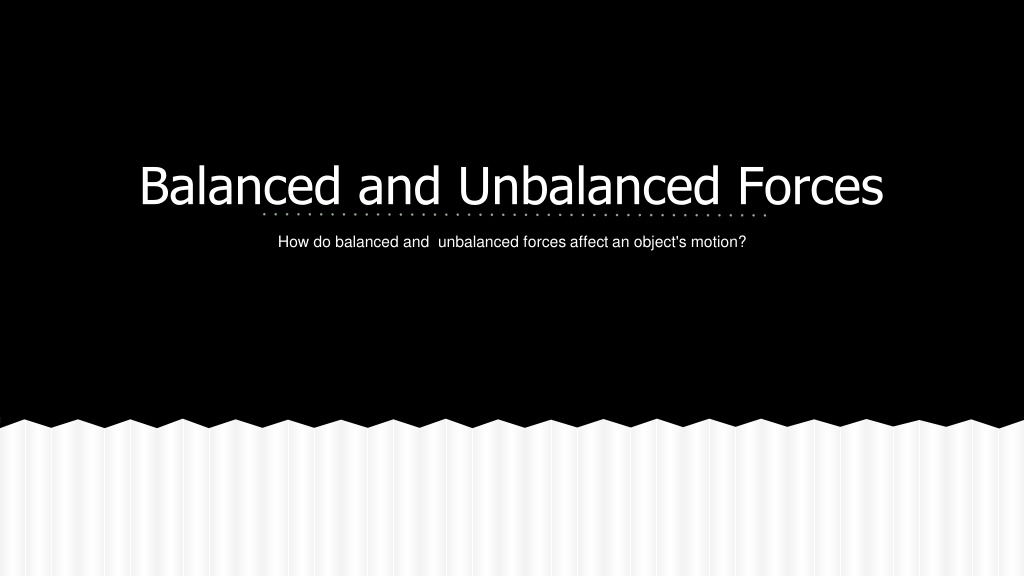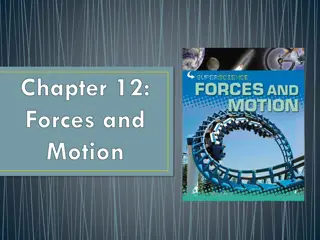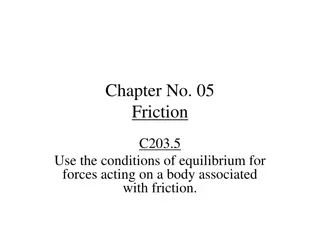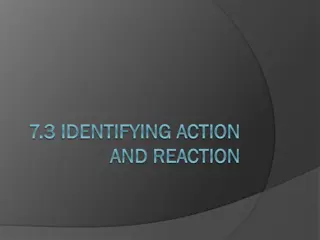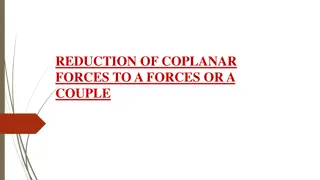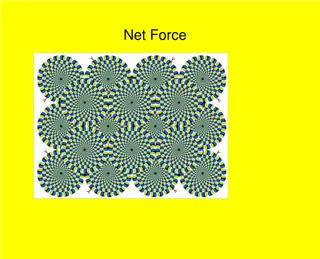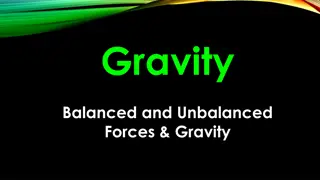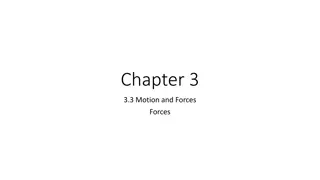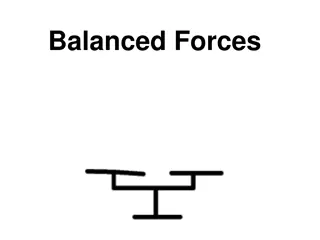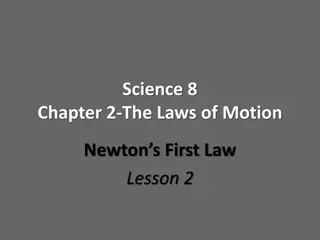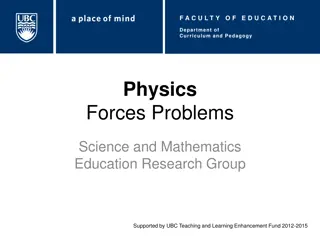Understanding Balanced and Unbalanced Forces in Physics
Forces play a crucial role in determining an object's motion. Balanced forces have a net force of 0 N, resulting in no change in motion, while unbalanced forces lead to a change in motion. Inertia, the resistance to changes in motion, and the concept of combining forces are also important in understanding how objects move. Practice questions further reinforce these concepts.
Uploaded on Sep 07, 2024 | 2 Views
Download Presentation

Please find below an Image/Link to download the presentation.
The content on the website is provided AS IS for your information and personal use only. It may not be sold, licensed, or shared on other websites without obtaining consent from the author. Download presentation by click this link. If you encounter any issues during the download, it is possible that the publisher has removed the file from their server.
E N D
Presentation Transcript
Balanced and Unbalanced Forces How do balanced and unbalanced forces affect an object's motion?
What is inertia? Inertia is the resistance of any physical object to any change in its state of motion, including changes to its speed and direction. Inertia tells us the we need a force to get an object to move or stop an object from moving.
What is a force? In science, a force is a push or a pull. All forces have two properties: Direction and Size A newton (N) is the unit that describes the size of a force.
What is a force The student is pushing down on the chair, but the chair does not move. The floor is balancing the force by pushing on the chair.
Combining Forces More than one force often acts on an object. When all the forces acting on an object are added together, you determine the net force on the object. An object with a net force more than 0 N on it will change its state of motion.
Forces in the Same Direction When forces are applied in the same direction, they are added to determine the size of the net force.
Forces in Different Directions When two forces act in opposite directions, you subtract the smaller force from the larger force to determine the net force. The net force will be in the same direction as the larger force.
Balanced Forces When the forces on an object produce a net force of 0 N, the forces are balanced. There is no change in the motion of the object.
Unbalanced Forces When the net force on an object is not 0 N, the forces on the object are unbalanced. Unbalanced forces produce a change in motion of an object.
Lets Practice! 350 N Net Force ____________
Lets Practice 200 N
Lets Practice 75 N 150 N 75 N Net Force _________________
Lets Practice 10 N 30 N
Exploring Forces We will look at three examples of forces: - Friction - Gravity - Magnets
Friction Friction is the force that opposes the motion between two surfaces that touch. The surface of any object is rough. Even an object that feels smooth is covered with tiny hills and valleys. The contact between the hills of valleys of two surfaces causes them to stick, resulting in friction.
Friction The amount of friction depends on: Roughness of the surfaces Force pushing the surfaces together
Types of Friction Kinetic friction occurs when force is applied to an object and the object moves. Examples: Sliding Friction: pushing an object across a surface Rolling Friction: between wheels and a surface Fluid Friction: opposes the motion of objects traveling through a fluid (air or water)
Types of Friction Static friction occurs when force applied to an object does not cause the object to move.
Reducing Friction To reduce the amount of friction, apply a lubricant between two surfaces. Ex) Motor oil, wax, and grease Friction can also be reduced by rolling, rather than pushing, an object.
Increasing Friction Friction increases when the surface area of an object increases. Friction increases as surfaces are made rougher. Friction increases when the force between two objects increases.
Discuss! - How does friction affect an object s movement? - How can friction be beneficial? - How can friction be a problem? - Which stations demonstrated friction at work?
Gravity Gravity is the force of attraction between matter. Gravity depends on: mass and distance
Mass and Gravity The more massive an object the more it can attract objects to itself. For example, the Sun has a larger gravitational effect than the Earth.
Distance and Gravity The further away objects get from one another, the less gravitational attraction can be found.
Discuss! - How does gravity affect an object s motion? - Is gravity balanced, unbalanced, or both? Give evidence to support your answer. - Was gravity at play in any of the stations?
Magnets A magnet is an object with a north and south pole that produces a magnetic field and exerts a magnetic force.
Magnets A magnetic field is the force field that surrounds the magnet. A magnetic force can cause objects to attract or repel without needing to touch the magnet!
Poles Like poles will repel or move away from one another. Opposite poles will attract or move towards one another.
Compass A compass uses the Earth s magnetic field and magnets to help a person determine direction. The magnet s poles will line up with the Earth s north magnetic pole and south magnetic pole.
Discuss! - How do magnets affect an object s motion? - What happens to an object's motion if no forces are acting on it?
